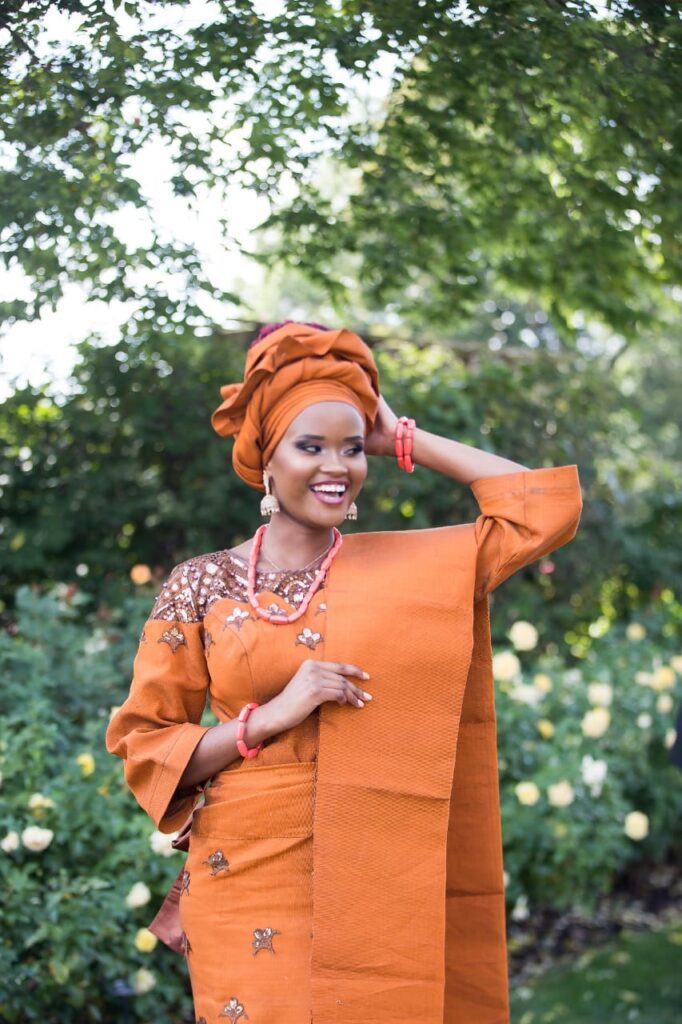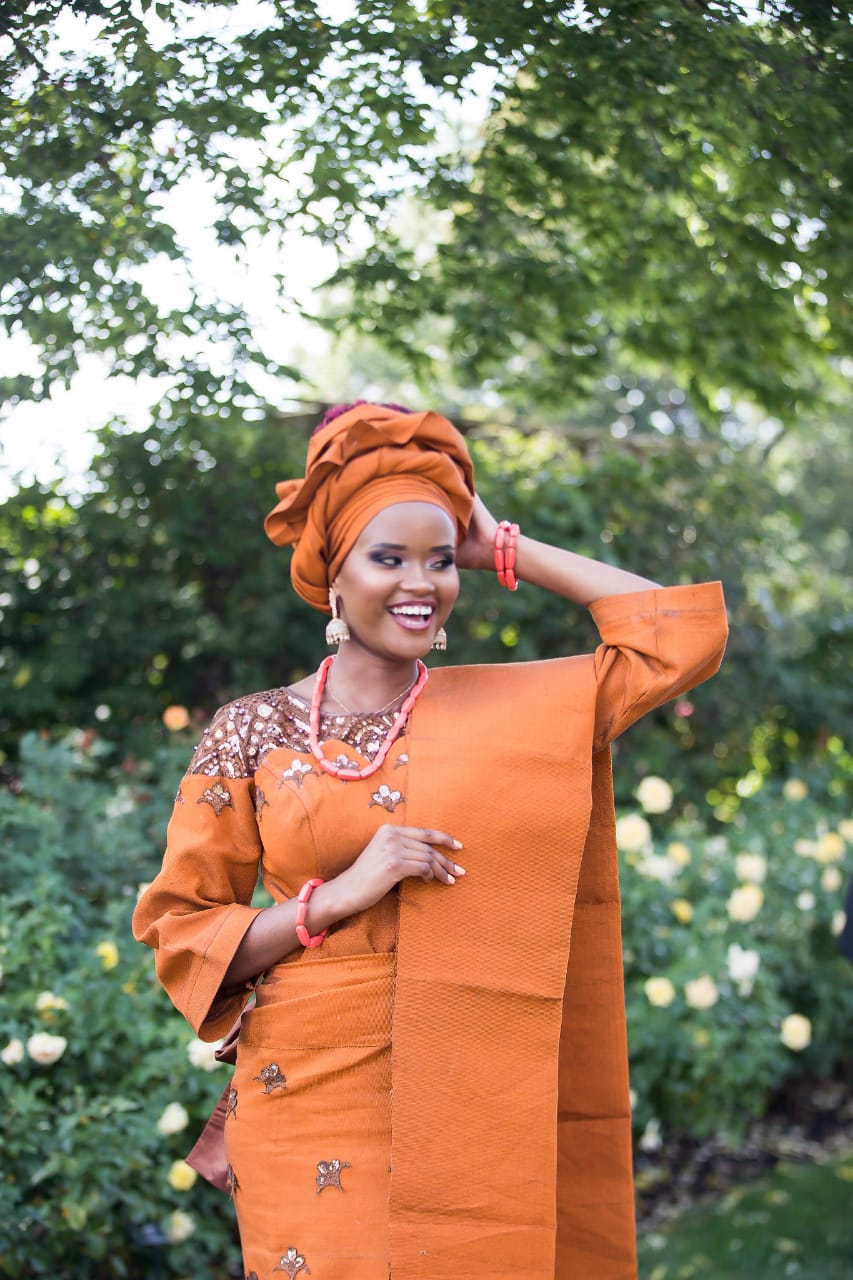History of Aso Oke
Aso Oke, a handwoven fabric originating from the Yoruba people of southwestern Nigeria, is a textile steeped in history and cultural significance. The term “Aso Oke” translates to “top cloth” in Yoruba, signifying its importance and high status within the community. Traditionally, Aso Oke is worn during significant occasions such as weddings, festivals, and coronations.

Origins and Development
The weaving of Aso Oke dates back to the 15th century. The Yoruba people have maintained this intricate craft through generations, using locally sourced cotton and dye. Early Aso Oke fabrics were woven on narrow strip looms, with each strip sewn together to create a broader piece of cloth. The weaving process is labor-intensive, involving detailed patterns and vibrant colors achieved through natural dyes derived from plants and minerals.
Symbolism and Patterns
Aso Oke is not merely a fabric but a canvas of cultural expression. Each pattern and color holds specific meanings. Common types include:
- Etu: Characterized by deep blue and white stripes, representing the essence of Yoruba royalty and dignity.
- Sanyan: Made from beige silk and cotton, often reserved for high-ranking individuals and special ceremonies.
- Alaari: Notable for its rich red hue, symbolizing vitality and celebration.
Care for Aso Oke
Aso Oke is a delicate and precious fabric that requires special care to maintain its beauty and longevity. Here are some essential tips for caring for Aso Oke:
Cleaning
- Dry Cleaning: The safest method for cleaning Aso Oke is professional dry cleaning. This prevents the colors from fading and the fabric from shrinking.
- Spot Cleaning: For minor stains, gently dab the affected area with a damp cloth and mild soap. Avoid rubbing vigorously to prevent damage.
Storage
- Cool, Dry Place: Store Aso Oke in a cool, dry place away from direct sunlight to preserve the colors and fabric integrity.
- Flat Storage: If possible, store Aso Oke flat to avoid creases. If hanging, use padded hangers to prevent stretching.
- Acid-Free Paper: When folding, place acid-free tissue paper between layers to prevent creases and protect the fabric.
Handling
- Gentle Handling: Handle Aso Oke with clean hands to avoid transferring oils and dirt onto the fabric.
- Avoid Sharp Objects: Be mindful of sharp objects that can snag or tear the delicate weave of Aso Oke.
Modern Trends in Aso Oke
In recent years, Aso Oke has undergone a renaissance, blending traditional craftsmanship with contemporary fashion trends. This evolution has made Aso Oke a versatile and fashionable choice for various occasions.
Innovative Designs
Modern designers are experimenting with Aso Oke, creating innovative designs that cater to both traditional and modern tastes. These include:
- Fusion Styles: Combining Aso Oke with other fabrics like lace, silk, and chiffon to create unique and stylish outfits.
- Contemporary Cuts: Incorporating modern cuts and silhouettes, such as peplum tops, jackets, and jumpsuits, making Aso Oke suitable for everyday wear.
Color Variations
While traditional Aso Oke features natural, earthy tones, contemporary versions come in a broader spectrum of colors. These vibrant hues cater to a diverse audience, allowing individuals to express their style while honoring their heritage.
Accessories and Decor
Aso Oke is no longer limited to clothing. Designers are crafting accessories such as bags, shoes, and jewelry, as well as home decor items like cushions and wall art, showcasing the fabric’s versatility and aesthetic appeal.
Global Influence
The global fashion industry has taken note of Aso Oke, incorporating it into international fashion shows and designer collections. This global recognition highlights the fabric’s timeless beauty and cultural significance, bringing Yoruba heritage to a broader audience.
Conclusion
Aso Oke is a testament to the rich cultural heritage and skilled craftsmanship of the Yoruba people. Its historical significance, intricate designs, and evolving trends make it a cherished fabric in both traditional and modern contexts. By understanding the history, proper care, and contemporary adaptations of Aso Oke, we can appreciate and preserve this beautiful textile for future generations. At BerryAfricana, we celebrate the enduring elegance and cultural richness of Aso Oke, honoring its past while embracing its future.


Leave a comment